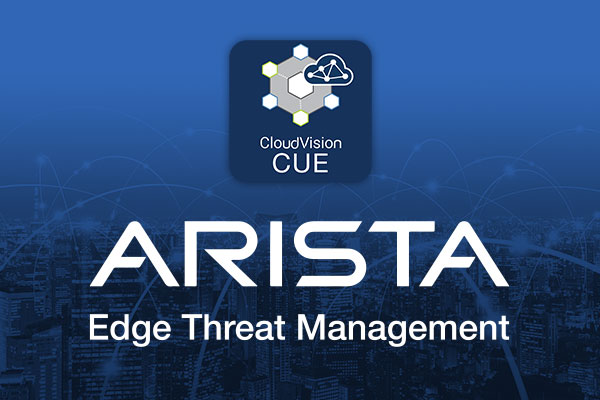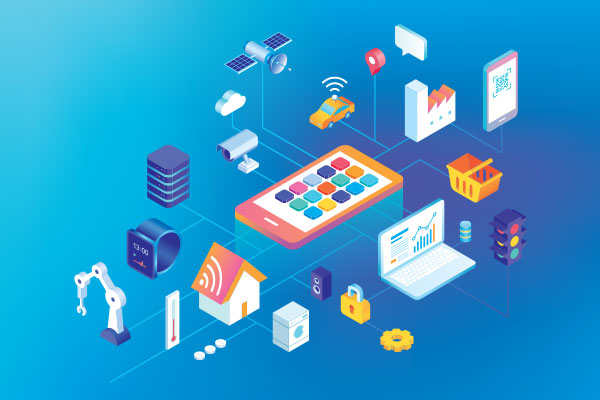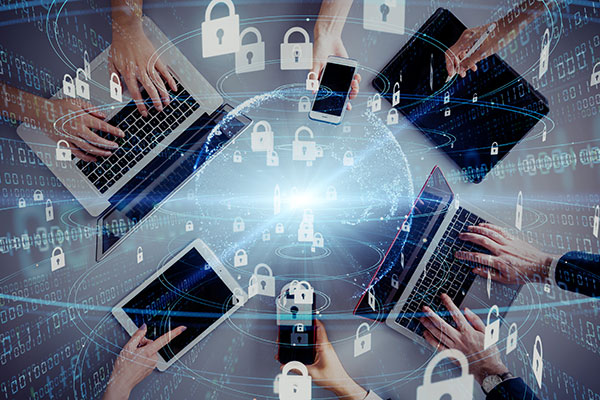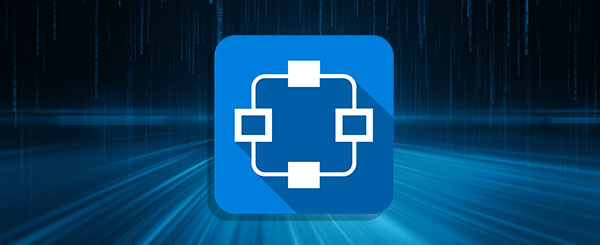Untangle is now part of Arista Networks

“The shift to work from home, shop from home, school at home has dramatically extended the global cyber-attack surface. The days of being able to provide access controls have been replaced with edge-less, multi-cloud, multi-device collaboration across multiple platforms being accessed by billions of global devices.
The global pandemic did not alter the dynamics of what was to come but did accelerate the global transition to edge computing. Bolt-on security measures are simply too tactical and too expensive to deploy and manage. The paradigm shift to perimeter-free computing has highlighted the need for both small and large businesses to embed security into their network infrastructure as a proactive approach to manage global threats.
Over the past 10+ years, Untangle has demonstrated success providing Edge Threat Management (ETM) solutions for the mid-market. We have seen the business evolve from a Next Generation Firewall purposely designed to provide enterprise quality of services for the mid-market. In 2017 we added Command Center, a cloud-based Security Management solution to expand our market to provide Managed Service Providers the ability to centrally deploy and manage their highly distributed customer base. In 2020 we moved further to the edge with the launch of Micro Edge, providing advanced connectivity and security capabilities to enable any business to have a secure network edge at a fraction of the cost of traditional commercial solutions.
I am pleased that Untangle has joined forces with Arista Networks, an industry leader in data-driven, client to cloud networking. Untangle will become a subsidiary of Arista, providing all the security assets for its Cognitive Unified Edge (CUE) offering. As a component of Arista’s CUE portfolio, Untangle will enter the next frontier of secure wired/wireless networks to the commercial and distributed enterprise.
We are excited about the opportunity to work with Arista and continue to provide additional technology to our vast partner network.”
– Scott Devens, CEO of Untangle
With such a strong focus on making networking and security products easy to deploy, easy to manage and easy to maintain for the channel, Untangle joins Arista at exactly the right time as our strategy and vision for our products converge.
Arista is looking forward to strengthening its focus on the channel and the mid-market with the addition of Untangle’s Edge Threat Management suite of products. The Untangle Command Center, NG Firewall and Micro Edge fit together with our own complementary offerings. With a larger portfolio of products to pull from, we will be able to help our mutual channel communities grow their businesses with us. We warmly welcome all of the Untangle team, and the Untangle Customer and Partner community, into the Arista family.
Arista is looking forward to strengthening its focus on the channel and the mid-market with the addition of Untangle’s Edge Threat Management suite of products. The Untangle Command Center, NG Firewall and Micro Edge fit together with our own complementary offerings. With a larger portfolio of products to pull from, we will be able to help our mutual channel communities grow their businesses with us. We warmly welcome all of the Untangle team, and the Untangle Customer and Partner community, into the Arista family.
– Mark Foss, SVP of Global Field Operations & Marketing, Arista
Untangle Expands Command Center to Support European Customers
Untangle Command Center now available, hosted entirely on European cloud infrastructure
SAN JOSE, Calif. – March 15, 2022 – Untangle® Inc., a leader in comprehensive network security for small-to-medium businesses (SMBs) and distributed enterprises, today announced the expansion of its award-winning cloud-based management tool, Untangle Command Center, to better serve the needs of its growing European customer base. A key component of the Untangle Network Security Framework, along with Untangle’s NG Firewall and Micro Edge, Command Center is now available to European customers hosted entirely on EU cloud infrastructure. Partnering with German-based cloud provider IONOS, the expansion makes it easier for Untangle channel partners to deliver Untangle’s Network Security Framework to local customers.
According to the Untangle SMB IT Security Report, digital transformation has spurred 58% of SMBs to deploy more than 10% of their IT infrastructure in the cloud – a 32% increase from 2020. To meet the increasing demand for cloud security, Untangle’s partnership with IONOS will increase connection speed to Command Center for European customers, further enabling European channel partners to proactively manage IT operations.
The launch of the European Command Center demonstrates Untangle’s focus on providing more resources to European IT teams and continuing to grow the Untangle partner base globally. Untangle solutions already provide significant support for cloud deployments across the US and Europe, offering multi-currency payment options. The launch comes after the most recent update to Command Center, which made it possible to connect geographically dispersed offices together in seconds using a mesh topology with auto-provisioning of VPN tunnels.
“Untangle’s relationship with IONOS has enabled us to quickly build a separate instance of our Command Center entirely hosted in Europe,” said Scott Devens, CEO of Untangle. “Our expansion into Europe makes it easier for our European channel partners to deliver Untangle’s Network Security Framework to their locally based customers. Our channel partners now have the ability to offer their customers a complete suite of networking and security products running on a highly secure and scalable European infrastructure.”
“Untangle already has a strong presence and support for the European market,” said Peter Prahl, VP Digital and International Cloud Sales, IONOS. “IONOS is excited to be powering Untangle with first-class cloud infrastructure, so that Untangle customers can more quickly and easily access and control their IT infrastructure management tools”.
Brainworks’s Managing Director, Derk Steffens who represents Untangle in Germany, said “brainworks have been working closely with Untangle and IONOS to bring networking and security products to the European market in an attractive European hosted package. Untangle’s European Command Center will enable us to further expand the Untangle offering across the region with our with our MSP’s, Resellers and their end-users, feeling confident that their data is contained locally and GDPR compliant”.
Robert Hall, Brigantia’s Product Marketing Director in the UK who has recently partnered with Untangle to add Untangle’s networking and security products to their portfolio said “Being able to provide a European based Command Center enables us to bring on board more MSP’s throughout the UK who are looking for a local presence and fast connections”.
Command Center is free to use for customers with Untangle NG Firewall Complete subscriptions and/or Untangle Micro Edge with paid subscriptions. To learn more, visit: https://www.edge.arista.com.
About Untangle
Untangle is an innovator in cybersecurity designed specifically for the below-enterprise market, safeguarding businesses, home offices, nonprofits, schools and governmental organizations. Untangle’s integrated suite of software and appliances provides enterprise-grade capabilities and consumer-oriented simplicity to organizations with limited IT resources. Untangle’s award-winning network security solutions are trusted by over 40,000 customers around the world. Untangle is headquartered in San Jose, California.
About IONOS
IONOS is the leading European provider of cloud infrastructure, cloud services, and hosting with more than eight and a half million customer contracts. The product portfolio offers everything that companies need to be successful in the cloud: from domains, classic websites, do-it-yourself solutions and online marketing tools to full-fledged servers and IaaS solutions. The portfolio is aimed at freelancers, small businesses, and consumers as well as enterprise customers with complex IT requirements.
IONOS was created in 2018 from the merger of 1&1 and IaaS provider ProfitBricks. IONOS is part of the listed United Internet AG (ISIN DE0005089031). The IONOS brand family includes STRATO, Arsys, Fasthosts, home.pl, InterNetX, SEDO, United Domains, and World4You.
Untangle Media Contact
Lumina Communications on behalf of Untangle
Untangle@LuminaPR.com
408-963-6418
Channel Partners Evolve to Enable Hybrid Work and Combat Rising Cyberattacks

As the industry looks toward 2022, it must also acknowledge the recent turbulent past. Through two unprecedented years of a pandemic and record breaking cyberattacks, Channel Partners across the globe have provided network security solutions to small and midsize businesses (SMBs) in a variety of industries. And throughout 2021, they continued to face challenges in the cybersecurity market – in office vs remote work, rising cyberattacks, customers who don’t want to change what’s working, etc.
In Untangle’s annual 2021 Voice of the Channel and 2022 Predictions Report, over 1500 Channel Partners were surveyed about challenges they faced over the last year, customer threats, current service portfolios, and the trends that will shape strategic business decisions for their organizations moving forward. What was learned is, despite the turbulence, Channel Partners have evolved and risen to the challenges and are preparing for the future.
Challenge – the Changing Work Landscape
In 2020 at the start of the pandemic, companies were quick to react and sent employees home to work. Fast forward to 2022 and businesses are going back to the office, many have already returned, and many have set March and Spring 2022 to bring back an in-office policy. Throughout all of these changes, channel partners have adapted to accommodate not only in-office clients, but also remote working as well as hybrid scenarios that have employees rotating in and out of the office.
How Channel Partners Have Adapted
To deal with the workplace transformation, Channel Partners have adapted to both remote working and hybrid scenarios. Moving into 2022, 49% of our partners said that 50% or more of their clients would continue to work remotely. To accommodate the dispersed workforce, partners found the most requested security feature from clients in 2021 was endpoint security (49% of MSPs), and then VPN Connectivity (25.8% of MSPs). These features being at the top of the list supports the trend that clients are looking to both enable and secure remote and hybrid work and stay ahead of cyber threats. Channel Partners have taken on the challenge with 85% offering endpoint security and 89% offering general network security including VPN technology.
Challenge – Increasing Cyberattacks
Headlining the news in 2021 was a string of high-profile cyberattacks, including the infrastructure attacks on the Colonial Pipeline and JBS Foods. What didn’t make the news cycle were record breaking cyberattacks on SMBs with Verizon’s 2020 Data Breach Investigations Report, (DBIR), indicating that 43% of cyberattacks target small businesses. According to the Voice of the Channel report, in 2021, the most common types of attacks that partners saw in 2021 were:
- Phishing (68% of partners)
- Malware / Virus (51% of partners)
- Ransomware (33% of partners)

How Channel Partners Have Adapted
With this rise in cyberattacks, 70% of channel partners saw increased requests following a major cyberattack with almost 50% saying they received requests for all of these services: network security, endpoint security, employee cybersecurity education and VPN. Following the jump in requests, for 2022, 83% Channel Partners expect that the cybersecurity side of their business will increase.
Trends for 2022
The growing number of cyberattacks and security risks also have Partners investigating newer security approaches. As Partners look to overcome the challenges presented by the rise in cyberattacks and in supporting globally dispersed networks and end users, they are looking at adding new solutions into their portfolios to meet these needs. For 2022, the new offerings that partners are making a priority to add are Zero Trust (33%) and web application firewall (31%). Notably, Zero Trust didn’t even make the list of features to consider in 2021, showing how fast the cybersecurity landscape is changing.
While the past two years may have been challenging, Channel Partners have risen to the occasion by adapting to the evolving needs of their clients in the wake of cyberattacks and a shifting workforce to better help protect their clients’ business, critical data and remote workers.
To view a full copy of the report, please visit:
Untangle Uplevels Dispersed Network Security with Micro Edge 4.0
Micro Edge with Web Filter Assesses URL Risks and Blocks Malicious Websites
SAN JOSE, Calif. – March 1, 2022 – Untangle® Inc., a leader in comprehensive network security for small-to-medium businesses (SMBs) and distributed enterprises, today announced Micro Edge 4.0 with Web Filter powered by Webroot BrightcloudⓇ. Micro Edge, formerly SD-WAN Router, now provides customers with a real-time assessment of the risk posed when opening a URL and blocks access to high risk sites. The result is a safer network and increased business productivity.
According to the 2021 SMB IT Security Report, 75% of surveyed SMBs operate in up to 5 distinct locations, including branch offices, warehouses, and satellite offices. This means more users, devices and data will continue to operate at the network edge. However, the network edge is a vulnerable location, and security is less often considered a priority over actual access to the network and resources. As businesses continue to expand geographically and need to support network connectivity at more and more locations, they can become vulnerable to attacks if administrators are unable to balance performance and connectivity with security.
Micro Edge is a lightweight network edge device that provides secure branch connectivity at network edge locations, optimizes existing internet infrastructure, and prioritizes business critical applications to maximize employee productivity. Now, with Web Filter, Micro Edge empowers administrators to control access to over 80 risk classification categories giving them extensive control over the types of websites that are accessible.
“Many websites contain malicious code that can infect network devices and compromise data including phishing, keyloggers, spyware, drive-by malware and more. Micro Edge with Web Filter enabled is an efficient and effective security tool for protecting remote locations from malicious content found on websites“, said Heather Paunet, senior vice president of product and marketing at Untangle. “As workforce environments adapt and change due to external factors, Untangle is prepared and committed to helping organizations stay secure, connected and productive, no matter where they are located.”
Web Filter is also a valuable tool to increase productivity, blocking websites that are deemed non-essential. Distractions in the form of social media, media, and inappropriate content can be blocked ensuring only safe and productive websites are available to users on the network.
Micro Edge with Web Filter is available now. To ensure your network, data and users are protected from the ever increasing volume of cyberthreats, visit https://www.edge.arista.com/untangle-micro-edge/.
About Untangle
Untangle is an innovator in cybersecurity designed specifically for the below-enterprise market, safeguarding businesses, home offices, nonprofits, schools and governmental organizations. Untangle’s integrated suite of software and appliances provides enterprise-grade capabilities and consumer-oriented simplicity to organizations with limited IT resources. Untangle’s award-winning network security solutions are trusted by over 40,000 customers around the world. Untangle is headquartered in San Jose, California
Untangle Media Contact
Lumina Communications on behalf of Untangle
Untangle@LuminaPR.com
408-963-6418
The IoT Makes Life and Work Easier; What That Means for Cybersecurity

The Internet of Things (IoT) is playing an increasingly important role in our business and personal lives. It has evolved to include devices we never dreamed of just a few years ago. Smart refrigerators, TVs, surveillance cameras, cars, watches: the list of connected devices continues to grow exponentially. According to Statista, the number of IoT connected devices worldwide is estimated to reach 30.9 billion units by 2025. While connected devices can make our lives easier at home and in the workplace, they can also expand the attack surface for cybercriminals.
What is IoT?
The Internet, as we’ve come to know it, connects hundreds of millions of computers, smartphones, and tablets around the world, for the benefit of its many users. The next iteration of the Internet, the Internet of Things, is different. Instead of a global network that can connect every person in the world together, the IoT connects every person and everything ‘thing’ in the world together.
Instead of a global network for the benefit of people, the IoT is a network for the benefit of things.
Defining the Internet of Things
The IoT doesn’t just connect computers and smartphones and tablets but also a variety of purpose-built autonomous devices. That includes sensors, controllers, switches, lightbulbs, doorbells, and the like. It’s connecting devices together so that those devices can communicate with one another and with various software applications and controllers.
These connected devices are designed to operate autonomously. IoT devices typically require little or no human interaction, via the use of artificial intelligence (AI) and other advanced technologies. This enables more, more automatic, and more intelligent services, without the need for human intervention.
How the IoT Works
Most IoT devices contain sensors that monitor their surroundings and collect data. They typically connect to each other and to other networks via Wi-Fi, Bluetooth, or other wireless protocols. Many of these wireless devices are small and battery-powered.
The data collected by IoT devices are fed to specific software or services that then process, analyze, and act on that data. This software can reside on another device, on a separate controller, in a corporate data center, or in the cloud. These applications typically work in an automated or semi-automated fashion, although they can be controlled by real-live human beings.
IoT: Valuable in Daily and Work Life
At its most basic, the IoT automates many previously manual activities. It relieves human beings of the tedium of repetitive tasks and offloads simple decision making. It’s designed to make life easier for consumers and businesses alike.

Common IoT devices for business.
The IoT offers numerous benefits to consumers through its many practical uses, many of which are realized today. Practically every “smart home” device is enabled by the IoT, as are many smart devices and applications.
The IoT also benefits businesses with improved efficiency in offices, factories, and retail stores. It’s all about automating repetitive and predictable processes to improve efficiency and collecting more and more detailed data to make faster and more accurate business decisions.
The Internet of Things promises improved efficiency in offices, factories, and retail stores.
Some of the chief business uses of the Internet of Things include:
- Smart lighting and HVAC systems
- Smart building security
- Smart inventory and supply chain management
- Smart manufacturing via RFID tagging and robotic processes
- Smart delivery routing and tracking
These uses can result in numerous benefits for savvy businesses, including improving the customer experience, speeding up existing processes, and enhancing employee productivity. IoT technology can also help management better manage day-to-day operations and make better long-term decisions.
How the IoT Impacts Cybersecurity
While the IoT brings many benefits to both consumers and businesses, it also presents new and complex cybersecurity threats. IoT devices present an appealing target to cybercriminals. There are lots of them, they’re everywhere, and they’re often connected to large networks and systems. Many IoT devices are also poorly secured compared to computers and other traditional devices, which makes them easier to hack into.
The problem is made worse when you consider that the firmware in many IoT devices cannot be easily updated. This makes it difficult, if not impossible, to patch security flaws putting those devices at continuing risk.
IoT devices present an appealing target to cybercriminals.
The sheer number of these devices currently in use increases the odds of IoT-related security breaches. IOT Analytics says there are at least 12.3 billion IoT devices currently in use. That’s a lot of potential access points for malicious intrusions – which explains the startling increase in IoT-based cyberattacks. Kaspersky Labs reports more than 1.5 billion breaches of IoT devices during the first half of 2021 alone, more than double the number of attacks during the same period the previous year.
Hackers can break into an IoT device and do one of several things:
- Steal the data stored on or collected by the device
- Use the device to remote attack other devices and systems
- Redirect control of the device to make it perform contrary to its intended function (imagine public utilities hijacked via IoT-connected devices)
- Use the device’s connection to a larger system to hack into that system and breach the data stored there
How Cybercriminals Exploit IoT
Cybercriminals can easily exploit home IoT devices such as smart speakers, smart doorbells, smart switches, and the like. Security flaws in these and other smart devices make it easy for hackers to breach and take control of these devices, either affecting operation or stealing collected data.
IoT devices represent an even greater security threat to businesses. Every single IoT device connected to the company’s network represents a potential attack surface. Hackers can gain control of smart printers, smart routers, and the like to break into corporate networks and systems and access sensitive data or plant ransomware or other malware. Unless IoT devices are properly isolated and secured – and the data they transmit encrypted – the risk of an IoT-related breach is high.
Every single IoT device connected to the company’s network represents a potential attack surface.
The risk increases as more companies move to larger remote workforces. Not only does a business have to protect IoT devices directly connected to its network, it also has to guard against remote employees’ personal smart devices being used to breach the larger network.
How to Protect Your Network from Being Compromised Through IoT
How can individuals and businesses best protect against IoT-related cyberattacks? There are several things that can be done.
Protecting Your Home from IoT Risks
Guarding against IoT-related attacks and breaches in the home is challenging, as consumers don’t always have a lot of control over how their devices are secured. The best approach is to limit the amount of potential damage by engaging in the following activities:
- Employing strong wireless security on all Wi-Fi routers and gateways
- Employing strong passwords on all devices that require passwords – and changing those passwords on a regular basis
- Entering as little personal information into these devices as possible
- Regularly updating to newer versions of devices that, theoretically, have stronger built-in security

Protecting Your Business from IoT Risks
Protecting a business from IoT-related breaches and attacks involves increasing edge security. You need to reduce the number of potential attack surfaces, encrypt as much data as possible, and minimize the damage an attacker could inflict.
Here are some of the most important things a business can do to protect against possible IoT-related incidents:
- Inventory and secure all IoT devices. You need to know which devices are connecting to your network, no matter how small or seemingly insignificant. Establish a baseline for acceptable behavior – and disconnect all devices that don’t need Internet access.
- Stay up to date. Regularly update the firmware and apply any available patches to all eligible devices. If necessary, replace older devices with newer, more secure versions.
- Educate your users. The people in your organization represent your largest security risk. Educate and train your employees to recognize phishing emails and to not open attachments from unknown users.
- Create a separate network for IoT devices. Separate all IoT devices—whether company owned or employee owned—ensure the sensitive information on your corporate network is secure in the event of a compromised IoT device.
- Enable strong network security. Make sure that your network can’t be accessed without appropriate authorization. Enact strong username/password security and encrypt all data and communications.
- Use NG Firewall to protect against intrusion. One of the best defenses against IoT device threats is to gain visibility into the network traffic to identify normal and unusual behavior. NG Firewall can not only block spam, viruses, and phishing attempts, it can also block requests made by malware.
The Bottom Line
The Internet of Things is here and provides real benefits to both consumers and businesses. It also represents an increased cybersecurity risk that can be mitigated by taking proper precautions, such as regularly updating IoT devices, employing strong network security, and using the NG Firewall to monitor network behavior.
Report: Untangle Finds Channel Partners Saw 70% Increase in Inquiries Following Major Cyberattacks
Growing Zero Trust Offerings a Priority for Channel Partners in 2022
SAN JOSE, Calif. – February 15, 2022 – Untangle® Inc., a leader in comprehensive network security for small-to-medium businesses (SMBs) and distributed enterprises, today announced the results for its annual Voice of the Channel and Predictions Report. The report surveyed Untangle’s global network of more than 1,500 Channel Partners to learn about challenges faced over the last year, customer threats, current service portfolios, and the trends that will shape strategic business decisions for their organizations moving forward.
Rise of Zero Trust
Supply chain attacks dominated the news headlines in 2021. This is likely why 70% of Channel Partner respondents stated they saw an increase in customer inquiries following major cyberattacks, with the most commonly requested security features by clients being Endpoint security (49%), followed by VPN connectivity (28.8%). However, as the industry looks toward 2022, Partners most considered growing their Zero Trust (33%) and web application firewall (31%) product offerings as priority. Notably, Zero Trust didn’t even make the list of features to consider in 2020.
Cloud Deployments
Over the last four years, the trend of Channel Partners moving their IT stack to the cloud continues, with 25% saying they have 75% or more of their stack deployed in the cloud. However, the number of Partners who believe moving data and network traffic to the cloud offers better security is down 11% (36.5% in 2021 compared to 47.6% in 2020). This could be an indicator that trust in the cloud for SMBs has diminished, perhaps due to the extensive number of cyberattacks on cloud-based infrastructures over the last year. Nonetheless, 83% expect that the cybersecurity side of their business will increase.
Additional report highlights include:
- The top products Partners currently offer their clients are: Firewall/network security (89%), endpoint security (86%), email security (75%). Notably, only 23% currently offer Zero Trust technologies.
- Channel Partners have adapted to both remote working and hybrid scenarios, with a reported 49% stating that 50% or more of their clients would continue to work completely remotely.
- Rockwood School District in Missouri, was the victim of a malware attack that shut down the entire network in the district with more than 21,000 students and 4,000 staff.
- Top cybersecurity concerns for Channel Partners in 2022 in order of importance: (1) phishing, (2) employees who do not follow rules, and (3) ransomware.
“In a year that saw an increase in organizations transitioning – and staying – with a remote workforce, cyberattacks have likewise increased. Many made headlines for weeks at a time. The growing number of cyberattacks and security risks this past year have Partners investigating newer security approaches more intently,” said Heather Paunet, SVP of Products at Untangle. “As Partners look to overcome the challenges that arise in supporting globally dispersed networks and end users, they will likely need to adopt new solutions, like Zero Trust, into their portfolios to meet these needs. By combining Zero Trust with newer VPN technologies, Partners can better help protect their clients’ business, critical data and remote workers.”
To view a full copy of the report, please visit: https://get.edge.arista.com/2021_Voice_of_the_Channel.
About Untangle
Untangle is an innovator in cybersecurity designed specifically for the below-enterprise market, safeguarding businesses, home offices, nonprofits, schools and governmental organizations. Untangle’s integrated suite of software and appliances provides enterprise-grade capabilities and consumer-oriented simplicity to organizations with limited IT resources. Untangle’s award-winning network security solutions are trusted by over 40,000 customers around the world. Untangle is headquartered in San Jose, California.
Untangle Media Contact
Lumina Communications on behalf of Untangle
Untangle@LuminaPR.com
408-963-6418
The State of Cybersecurity in Education

While recent attacks on infrastructure have taken center stage, what is less publicized is the rise in cyberattacks on schools. In 2020, K-12 schools alone saw a rise of 18% to 408 breaches.1 Indeed, schools faced a barrage of attacks such data breaches, leaks, ransomware and phishing attacks, as well as an alarming new threat in the form of invasions of online classrooms.
In 2020 and 2021 ransomware attacks on schools and universities included:
- Broward County Public Schools, Florida, the 6th-largest school district in the US, was hacked and threatened with leaking student and teacher information online if a $40 million ransom wasn’t paid. They did not pay the ransom.
- Buffalo Public Schools, New York, was the victim of a cyberattack that forced the district to cancel classes for a few days until key systems, equipment and applications targeted were restored.
- Rockwood School District in Missouri, was the victim of a malware attack that shut down the entire network in the district with more than 21,000 students and 4,000 staff.
- The University of Utah experienced a ransomware attack on its computer servers and paid more than $450,000 to an unknown hacker.
- Hackers attacked the computer servers at the University of California, San Francisco (UCSF) School of Medicine. To regain access to their data, the school paid $1.14 million in Bitcoin.
The consequences of any cyberattack can be devastating and extremely costly, but an attack on an educational institution can also impact students’ personal information, research data, financial information, etc. All of this can be held for leverage or ransom, affect school operations and actually cause the school to shut down for a period during containment and recovery.
Why are schools targeted?
In 2021, the transition back to schools and universities from online learning often brought unauthorized technology used during online learning as well as new personal devices onto the school network. Additionally, tech savvy students may have the latest devices, yet they often don’t follow good cyber hygiene practices such as password management, using MFA and installing software updates right away. These circumstances posed a challenge to IT departments, and an opportunity for cyber criminals, as these devices could unknowingly contain malware and bring it back to the school’s network or provide an entry point to hackers.
Other factors that make schools a target to malicious actors include many organizations run on legacy systems that can’t protect them from evolving threats because they don’t have the necessary financial or staff resources that many large corporations have, to keep systems up to date and all staff trained on cyber threats. In addition, apps and devices used by other school departments such as facility management, transportation, administration, etc., provide additional points of entry for cyber criminals. These factors leave the network vulnerable to cybercriminals.
Barriers to cybersecurity in education
The main barriers education institutions face stem from the aforementioned lack of resources. According to surveys from the Consortium for School Networking (CoSN), only one in every five school districts has a full-time staff person dedicated to cybersecurity.2 Education leaders are left with the challenge of how to balance technology, personnel and risks when determining their cybersecurity investments.
Schools are also often breached by hackers who take advantage of the lack of cyber training for staff and students and aim their attacks at careless employees or students who trustingly reply, click on unknown links, or download files or unauthorized applications. The most common schemes are phishing and social engineering emails asking for credentials, payments or account details.

Top cyber threats to schools
What are the top cyber threats to schools and universities? Below are the most common threats schools need to monitor for and protect against.
-
Phishing and social engineering
Cyber criminals use tactics such as phishing and social engineering to entice people to unsuspectingly download malicious software and give them a path to enter the network. Phishing emails appear to be similar to other emails reaching one’s inbox and may look like it is from a trusted source, however, there are tell-tale signs it is a hacker:
- Incorrect domain name in email address
- Urgent or threatening language
- Suspicious attachments or incorrect links
- Misspelled words or grammatical errors
- Mismatched URLs
-
Third-party vendor issues
To breach a district or university, malicious actors may hack a smaller vendor to infiltrate the school’s network. Like businesses, schools are digitally connected with many vendors having access to their systems to conduct business such as transactions, share information, etc. Hackers see these connections as a way to exploit vulnerabilities and access the school’s network.
-
Unpatched and outdated software
Updating and installing all software patches and updates expediently is paramount to avoid a breach. Once attackers are aware of a new vulnerability, they work to exploit and gain access to the victim’s system and run their own malicious code on it.
-
Internet of things (IoT)
With different departments and audiences using a variety of tools in education, it can be hard to tell how many IoT devices are connected to the network at once. What is important is that they are all secure. If not, attackers can take advantage and find access points to gain an entry point to the school’s network, putting academic and personal information at risk.
It’s time to protect schools
When it comes to network security educational institutions already have unique challenges, starting with small IT teams and strict budgets. However, cyberattacks will continue to evolve and target educational institutions. To protect students, staff and valuable data, these challenges and barriers must be addressed and changed. Recently, the Biden Administration has enacted the K-12 Cybersecurity Act into law to enhance the cybersecurity of our Nation’s K-12 educational institutions. This law put into motion efforts by CISA to examine the cybersecurity risks associated with K-12 educational institutions as well as provide tools and guidance.
To help schools stay ahead of evolving threats and hackers, we’ve compiled our resources to protect schools’ networks and students and information safe from cyber threats.
Whitepaper – Addressing the Record Breaking Cyberattacks in Schools
Whitepaper – Finding the Balance Cipa Web Filtering for K-12
Whitepaper – Managing the IoT in Higher Education
Keeping Schools Safe: K-12 Network Security Checklist
NETWORK MAINTENANCE AND SECURITY – Guide for Schools and Districts
Incident Response Planning Checklist for K-12 Schools
SOURCES
1. K-12 Security Information Exchange
2. https://www.governing.com/security/cyber-attacks-on-schools-in-2020-were-record-breaking-report.html
Untangle SD-WAN Router is Now Micro Edge

What’s in a Name?
Starting January 12, 2022, SD-WAN Router will be renamed to Micro Edge.
It has been over two years since we launched SD-WAN Router, and in that time the product has evolved into much more than a router.
With this transformation, we felt a name change was in order as it continues to evolve and to position it for the future. Micro Edge continues to be a lightweight network edge device that provides secure branch connectivity, optimizes existing internet infrastructure, and prioritizes business critical applications to maximize employee productivity.
What’s behind the name?
“Micro” is a nod to being lightweight in both the physical size and the resources required to connect remote locations. “Edge” firmly places the product at the edge of the network where it performs best.
What’s next for Micro Edge?
We are excited to already have a new beta out now that includes the highly requested new feature, Web Filter. The beta is available for testing now in the forums.
A couple noteworthy items:
- There are no product changes other than updating the name to Micro Edge
- There aro no pricing changes
2021 Cybersecurity Wrap-up and Trends for 2022

As 2021 wraps up, we’re taking stock of the year from our cybersecurity point of view. After a tumultuous 2020, this year continued to be a roller coaster of new workplace conditions, disruptive cyberattacks and optimism in government action.
Below we list our top 3 trends and hacks that stood out for 2021, followed by what we see are the trends to watch for in 2022.
2021 TRENDS
Hybrid Work
If 2020 was the year of WFH (work from home), 2021 was the year of hybrid work. In many respects, it’s fascinating how much the workplace has changed in two years. Before 2020, while some businesses embraced a “work from anywhere” culture, only 20% of the workforce actually worked from home. Even with the capabilities to allow teams to collaborate, managers were still skeptical of the effectiveness of remote work and many companies, 80%, shunned remote work programs prior to Covid-19.
Fast forward to 2021 and businesses slowly began having employees return to the office, but now using a hybrid model where employees work part of the time in the office and WFH the rest of the time. However, for network security teams this is more than just having staff come back to the office, there are several complex network security considerations that must be addressed.
As employees rotate in and out of the office, companies will need to create plans and new safety protocols to keep their networks and employees safe. Most notably, employees could bring malware that is hiding in their laptops, waiting to move onto the corporate network. Employees may have also added unknown software and applications to help them while working from home. While helpful at home, they could prove dubious once on the network.
Shocking Infrastructure Hacks
Still reeling from the Sunburst cyberattack of December 2020, the summer of 2021 saw not only a rise in ransomware attacks, but malicious actors targeting critical infrastructure.
Attackers, such as the cybercriminal group DarkSide, have become more emboldened because of some of the incredible amounts of ransom paid for ransomware attacks recently. For example, attacks on the city of Florence, FL and Yazoo County School District, MS, cost each $300,000, while the University of San Francisco (UCSF) paid $1.14M in ransom. Once a capable hacker sees the potential to gain millions of dollars, many are willing to take the risk to try and infiltrate critical businesses in the hopes that one or more will pay up.
Critical services and infrastructure are also being targeted at increasing rates because bad actors found that by targeting infrastructure, they could not only disrupt business operations but society in general and hit consumers in the pocket. In addition, businesses don’t want to lose money by being offline, as every day not producing is very costly in lost revenue. Hackers found they can leverage causing societal disruption to demand larger ransoms delivered faster to get services up and running as soon as possible.
Significant infrastructure attacks of 2021:
Oldsmar Water Treatment Plant
On February 8, 2021, hackers accessed the water treatment plant of a small Florida city and changed the city’s water supply levels of sodium hydroxide from 100 parts per million to 11,100 parts per million. The changes were quickly discovered, and the sodium hydroxide levels were restored to their original levels with no harm to the water supply.
Pulse Secure
In March 2021, CISA assisted multiple government agencies, critical infrastructure entities, and other private sector organizations that had been using Pulse Secure’s VPN appliances targeted by hackers exploiting a zero-day vulnerability. This hack was significant because it targeted and compromised government agencies and companies in the U.S. and Europe.
Colonial Pipeline
On Friday, May 7, the news broke that Colonial Pipeline had been hacked and shut down its operations until the problem was resolved. The ransomware attack took down the largest fuel pipeline in the U.S. and led to shortages across the East Coast. The attack was the result of a compromised password as hackers gained entry into the networks through a virtual private network account.
JBS Foods
On June 1, 2021, less than a month after the Colonial Pipeline ransomware attack, JBS announced that they had experienced a cyberattack. A major, global meat producer headquartered in Brazil, JBS has more than 150 plants in 15 countries. The company was the target of an organized ransomware attack that affected servers supporting its North American and Australian IT systems.
Global and Government Coordination on Cybersecurity
International collaboration and government action on cybersecurity finally took center stage in 2021. In October, President Biden held a 30-country virtual meeting aimed at combating the growing threats of ransomware to economic and national security. The goal of the alliance is “to accelerate our cooperation in combating cybercrime, improving law enforcement collaboration, stemming the illicit use of cryptocurrency, and engaging on these issues diplomatically.”
In addition, the US and EU recently announced plans to join the Paris Call for Trust and Security in cyberspace, a multi-stakeholder group of supporters that includes states as well as private sector and civil society actors. The Call is built around a shared commitment to safeguard the benefits the Internet provides all people, protect individuals and infrastructure and promote the widespread acceptance and implementation of international norms of responsible behavior.
Lastly, efforts to protect schools from cyberattacks have increased with the K-12 Cybersecurity Act recently signed by President Biden that instructs the Cybersecurity and Infrastructure Security Agency (CISA) to look at the cybersecurity risks schools face, and to develop recommendations and guidelines to help schools implement protections against these risks.

TRENDS TO LOOK FOR IN 2022
Zero Trust
The growing number of hacks and security risks has agencies and companies investigating or moving to zero-trust strategies, with the Biden Administration even mandating zero trust for federal agencies. Zero Trust is one of the latest cyber security trends to protect digital environments. However, it isn’t a platform or device, rather it’s an initiative to protect digital environments based on the key principle that instead of first making services available and then locking down access to those services, no access is granted at all unless it is specifically and deliberately given. This principle is applied to users and devices.
It’s a simple and clear concept, but the ‘how’ can vary depending on the way each vendor implementing the concept chooses to do so. At its core, it uses micro-segmentation to break up security perimeters into small zones to create separate access points for separate parts of the network. While access may be granted to one zone, access to other zones will require separate authorization. Policies are set to give users the least amount of access needed to complete a task.
For additional layers of security, Zero Trust employs other security measures such as two factor authentication, identity and access management (IAM), and other verification methods, or by using an Identity Provider so that all authentication and authorization is centrally managed.
For a company looking to set up a zero-trust solution, one of the potential misconceptions is that zero-trust requires a completely new type of infrastructure with a costly brand-new solution.
However, it’s feasible to build on the investments that companies have already made. Zero Trust is not one type of technology vs another. It’s not about whether VPN is used underneath or something else. Zero-trust isn’t a platform, or a device. It’s an initiative for digital environments based on the key principle that no access is granted unless it is specifically given. This can be done using solutions that provide zero-trust with VPN technology underneath, or it can be done with other technologies that grant or deny access.
Evolving Cyber Threats
After the success of high-profile ransomware attacks in 2021, look for these types of attacks to evolve and become more sophisticated. Malicious actors will use more AI and machine learning to be more convincing at compelling action that leads to a breach.
In 2022, cyber threats will include more deepfake content to trick victims. The audio or video used in deepfakes is developed using AI or machine learning to alter or create content that misrepresents someone. Deepfakes have been especially successful in phishing attempts and identity theft and financial fraud. For example, a phishing scheme may use audio or a video of a CEO asking an employee to send money. Thinking the request is real, the employee complies, and the funds sent are lost.
To combat deepfakes, steps to spotting and reporting them must be included in all employee cybersecurity training. For example, facial features are hard to recreate, and close examination may reveal a fake. In addition, if possible, confirm with the supposed sender to see if the message is real.
Skills Gap
In Untangle’s 2021 SMB IT Security Report, “lack of manpower” was named one of the top three barriers to network security for small and medium businesses. The ongoing skills gap will continue to be a threat for 2022. Currently in cybersecurity, there is a shortage of workers in just about every position, from entry-level to executive, and across industries. At the core of the issue is there just aren’t enough skilled workers for the positions available. While computer science is a growing major in colleges, only a small portion of graduates are going into cybersecurity. To fill these positions, the industry and companies, will need to take action and:
- Learn how to recruit Generation Z
- Upskill current employees
- Invest in education
SOURCES
How the Coronavirus Outbreak Has – and Hasn’t – Changed the Way Americans Work
New Study: Nearly one-third of workers expect to work remotely full-time after the pandemic
COVID-19 News: FBI Reports 300% Increase in Reported Cybercrimes
Hack exposes vulnerability of cash-strapped US water plants
Deepfakes in cyberattacks aren’t coming. They’re already here.
How to Reduce the Financial Impact of Cyberattacks to Your Business

There has been a steady stream of significant cyberattacks headlining the news since December 2020 and the Sunburst attack on SolarWinds Orion platform. Fueled by the anonymity afforded by payments made in cryptocurrency, cyber criminals have stepped up their attacks and have gotten bolder with their ransom demands, often seeking millions of dollars.
While these large attacks garner much attention, cyberattacks continue to affect businesses of all sizes, including small and medium businesses (SMBs). To combat these attacks, security professionals and IT Departments are implementing more detection and containment methodologies. However, while IT budgets are increasing, only a fraction of this budget is being used on preventative network security measures, with the majority being used for detection, mitigation, recovery, and remediation activities. Now is the time for network security teams to realize that taking the time and money to invest in a comprehensive strategy, including prevention, can significantly reduce the likelihood of falling victim to a cyberattack, and therefore greatly reduce the financial impact if a data breach should occur.
The Consequences of a Cyberattack
While SMBs may feel invincible against a cyberattack, the consequences of being a victim can be devastating. After an attack, businesses not only have to recover data, but they must also invest in fixing the damaged portions of their network. Business leaders must also deal with lost productivity and the public fallout of announcing a data breach with possible lawsuits and reputational damage and loss of trust to their business. Businesses who are victims of a cyberattack also experience increases to business insurance policies and the cost of rebuilding the network security to prevent these attacks in the future. Because of these factors, according to the National Cyber Security Alliance, 60% of companies go out of business within six months after a data breach.
The Best Defense is a Good Offense
With the increase in data breaches on businesses of all sizes, it’s not surprising that business leaders want to make sure their organization is prepared to deal with the fallout of a data breach. Employing a preventative strategy when approaching network security can lay a robust foundation to blocking many cyber threats before they infiltrate the network.
Securing the corporate network, and devices connected to it, through a multi-layered approach can help prevent infiltration before it occurs. Yet, many organizations believe the initial investment and lack of expertise are barriers to implementing prevention in the cybersecurity lifecycle. However, there are measures every company can take to protect themselves.

8 Cost-effective Security Tools to Build a Prevention Strategy
-
Conduct a Cybersecurity Risk Assessment Audit
Proactive IT security protection starts with a two-part approach. First, conduct an audit of current data security activities in relation to potential threats. Second, with that knowledge, develop a risk assessment plan that includes preventative measures and policies to address the vulnerabilities identified in the audit to protect your data.
-
Deploy a Next Generation Firewall
Next-generation firewalls provide protection at the network gateway (on-premises or in a cloud) with an all-in-one solution that encompasses web content and application filtering, virus blocking, intrusion prevention, secure remote connectivity as well as employee productivity improvements such as bandwidth shaping and application control.
-
Deploy Endpoint Protection
With a diverse array of devices, such as laptops, phones, tablets and other IoT devices, deploying endpoint security throughout the network adds an additional layer for preventing cyberattacks. Network administrators or IT professionals can create policy settings limiting web access to sites known to distribute malware, or set specific web filter controls to corporate devices.
-
Schedule Network Backups
A routine backup schedule, that includes database and network configuration, should be stored in a different location outside of the network. Having these backups on hand in the case of a breach will mitigate any need to pay ransom demands and limit network downtime for employees.
-
Provide VPN Connectivity for Hybrid and Remote Employees
VPNs allow remote employees to create a safe connection to business-critical applications or data when logging into the network outside of the office. VPNs extend network security policies to remote devices, safeguarding them from intruders lurking on public WiFi or a home network.
-
Implement Password Hygiene
Password hygiene is critical for all employees who can access the corporate network. Training employees to change passwords often, use strong password recommendations, and activating two-factor authentication when available will keep credentials and crucial business information secure.
-
Manage Directory Access Policies
Limiting access to specific files based on current employee status, department, or even business title, can protect critical information. For example, does a marketing team member need to have access to the financial department’s balance sheets or vendor payment system? This crossover could have serious implications if one employee’s credentials are compromised, allowing unauthorized access to every file on the network.
-
Train Employees Continuously
As security adversaries find new ways to infiltrate networks, keeping employees trained and up to date will only strengthen your network security. Employees should be trained in the following aspects of network security:
- Corporate data responsibility and compliance regulations
- Password and credential maintenance
- Email responsibility with an emphasis on identifying evolving phishing tactics
- Corporate device policy with attention to VPN connectivity and safeguarding corporate devices from theft
Cyberattacks and data breaches continue to keep IT Departments searching for new and innovative ways to outwit cyber criminals. Many departments continue to place a heavy emphasis on detecting unauthorized access or suspicious activities and containing these breaches to minimize the business-wide impact. However, instituting effective preventative measures and engaging employees as an additional line of defense against cyberattacks can save businesses not only money, but productivity and reputation.
© 2024 Arista Networks, Inc. All rights reserved.